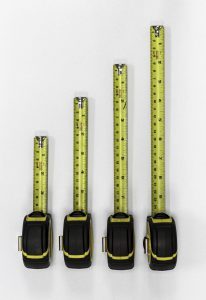Assessing your investment risk
April 4, 2013

Are risk assessment surveys useful or just a sales tool to motivate investors to complete a trade? Does the financial consumer benefit from these surveys or do they just provide a false sense of security?
A Risk Assessment Survey asks questions that are meant to reveal how much investment risk a client should take. The use of such tools can be good and bad.
In 2011, the Financial Services Authority (FSA), Britain’s investment industry regulatory body published a report on investor risk. It stated that nine out of eleven risk assessment tools they examined had serious faults.
We can benefit from this FSA report because there are no geographic boundaries to investment risk and surveys that measure risk tolerance.
To restate what has been mentioned, two of the eleven risk assessment tools passed their testing. That dismal failing grade could be harmful to anyone who has erroneously relied on a risk assessment resulting in an unsuitable investment or portfolio.
Making a suitable investment requires the true understanding of the risk an investor is both willing and able to make. You might be willing to take on a certain amount of risk; however, you might not be capable of absorbing the potential loss that might occur.
Two things must happen for a risk assessment survey to be useful. The first and most obvious step is that it must be neutral, carefully designed and extensively tested to ensure its accuracy as a measurement of risk.
The second requirement is to have other measurements including a discussion of risk. Measuring risk from several vantage points is critical to achieving a reliable risk assessment.
Our age, height, weight and the current temperature is specific. The process of measuring risk, however, is complicated because there is no measuring standard.
That is why we have to carefully assess and attempt to measure risk using several inputs. The accepted rule of carpentry is “measure twice and cut once”. With risk it can be said to measure several times and then continue measuring.
How much risk are you comfortable with? Often a husband and wife will have different risk comfortable levels. These should be understood and considered.
What is your history of investing and how have you reacted to past market volatility? Did you buy high, panic and then sell low? If you purchased an investment now, what decline in value would be too uncomfortable?
Do the arithmetic of investing. If you have a specific financial objective such as planning for retirement, what level of risk should you take in order to achieve a target return that will allow you to reach your retirement goals?
The risk discussion has to be how much risk you want to take and how much risk you should take in order to be successful. In that scenario you balance the conflicting risks of market volatility with not achieving your financial objectives. This is a common example of conflicting risks.
That is why, as stated above, that the risk assessment needs to be a conversation. At the end of the day there are many varying inputs and preferences that go into making the final risk assessment.
The risk conversation should continue into the future as circumstances and preferences may change. If the markets do well and your investments rise accordingly you might be able to lower your investment risk and still achieve your specific financial goals.
Using a risk assessment survey can be useful, but be cautious and have a comprehensive discussion with your advisor on all aspects of risk so you can truly understand your risk tolerance. This makes it much easier to select suitable investments.
RELATED ARTICLES
